On His 51st Birthday, Revisit Wes Anderson’s Dreamiest Onscreen Style Moments
It goes without saying that the relationship between film and fashion is symbiotic. Many of cinema’s most iconic moments have been defined by costume—just picture a white gown billowing above a subway grate or a pair of ruby slippers peeping out from under a tornado-stricken house. At the same time, no season goes by without designers drawing from the rich and inspiring web of references the film world offers.
And few filmmakers understand that clothes maketh the character better than Wes Anderson. The Texas-born auteur, who turns 51 today, is a figure beloved by designers and filmgoers alike, with his eclectic, whimsical take on costumes evident from his breakout film, 1998’s Rushmore, onward. There are the romantic berets and pussy-bow blouses that had us swooning when Alessandro Michele took the helm at Gucci back in 2015, all of which could have outfitted any number of Tenenbaums. Anderson’s precocious young heroines can happily find their perfect outfits in the bold color clashes and studied girlishness of Miu Miu. For the eccentric glamour of his more mature female characters played by Anjelica Huston or Tilda Swinton, meanwhile, Prada provides a perfect fit. (Anderson has gone on to collaborate with Mrs. Prada on both a 2013 short film and the café design at her Fondazione Prada arts center in Milan, now something of a pilgrimage site for Anderson’s most avid fans.)
Despite being notoriously press shy and preferring to express his interest in clothes through costume design and fashion collaborations, Anderson himself has exceptional personal style—notably his fondness for a rakish, loosely fitted cord or tweed two-piece suit that extends all the way back to his early days as a director in the mid-’90s. (A personal favorite Anderson fashion moment? The time he hit the Rome Film Festival in 2010 with the infamously reclusive novelist Donna Tartt, in likely her only red-carpet appearance ever, wearing complimentary suits and ties. Talk about the ultimate plus-one.)
To celebrate Anderson’s birthday, Vogue takes a look back at the fashion of some of his most iconic characters—and why style has always been at the beating heart of his films.
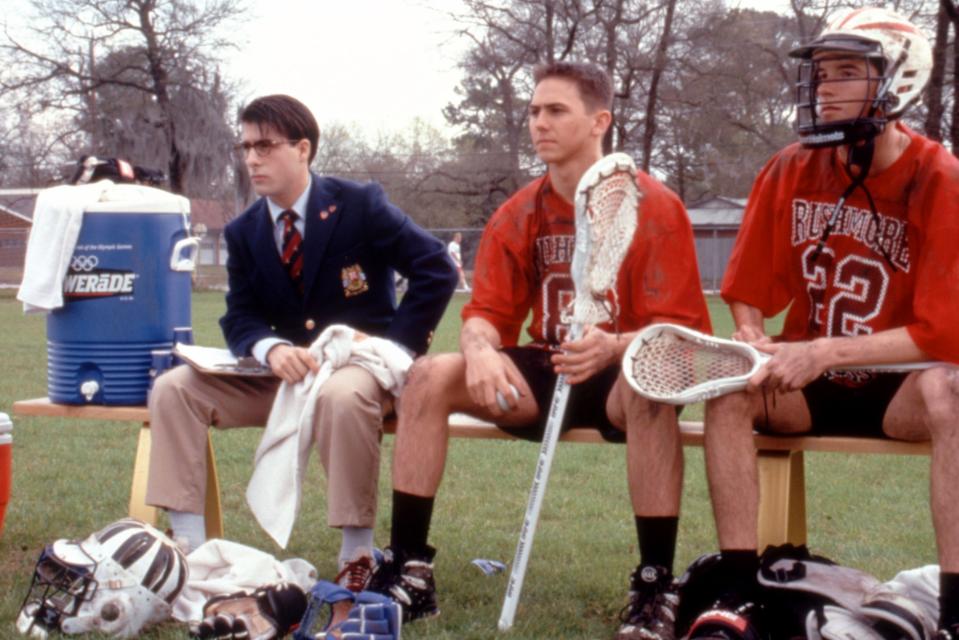
RUSHMORE, Jason Schwartzman (left), 1998, (c)Buena Vista Pictures/courtesy Everett Collection
©Buena Vista Pictures/Courtesy Everett CollectionMax Fischer, Rushmore (1998)
While Rushmore wasn’t Anderson’s first film (that would be the 1995 crime caper Bottle Rocket, which, while enjoying critical success, went largely unseen), it was certainly the project that put him on the map. Part of its charm was the breakout performance given by Jason Schwartzman in the leading role. His intellectual snobbery as the resident busybody of his posh private school becomes strangely endearing over the course of the film. It’s a transition helped in no small part by the knowingly absurd styling, as Fischer awkwardly models himself after his Parisian avant-garde heroes in ill-fitting berets and papakhas. Bonus points too for the first sighting of a hotel porter’s uniform, which would become a recurring Anderson style motif. It appears during a brief, typically surreal subplot in which Fischer disguises himself as a butler to unleash a swarm of bees in the hotel room of his love rival, played by Bill Murray. Because, of course.
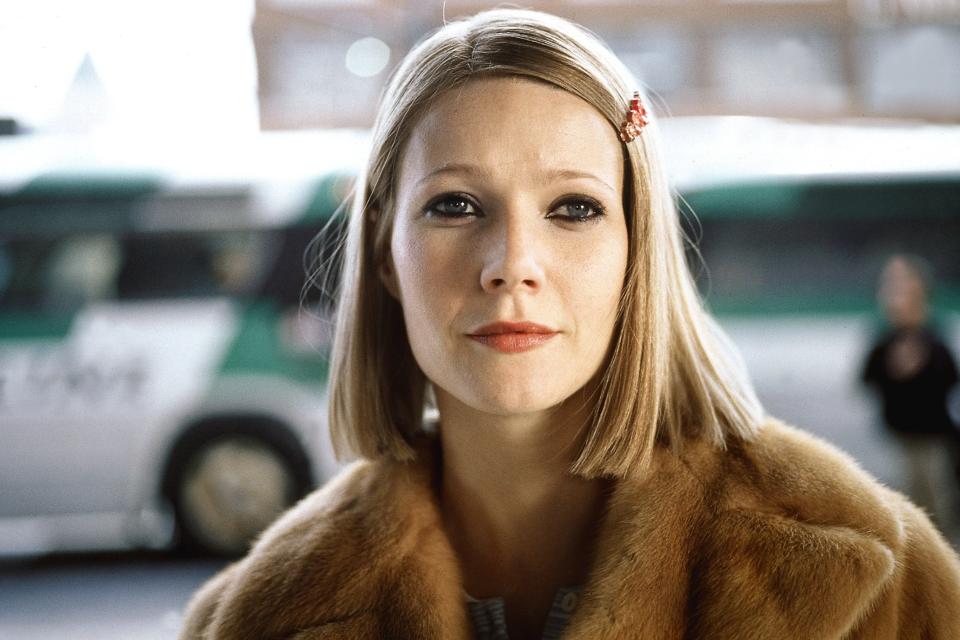
THE ROYAL TENENBAUMS, Gwyneth Paltrow, 2001. (c) Buena Vista Pictures/Courtesy Everett Collection
©Buena Vista Pictures/Courtesy Everett CollectionMargot Tenenbaum, The Royal Tenenbaums (2001)
Arguably the greatest style icon from any of Anderson’s films, Margot Tenenbaum (played by Gwyneth Paltrow) had a wardrobe packed with timeless looks that continue to be the envy of any vintage-fashion obsessive. Surprisingly, though, most of the iconic outfits were made bespoke for the film. The famous belted mink coat, for example, was a design that costume designer Karen Patch sent to the furriers at Fendi to craft especially for Paltrow, inspired by a character in an old Peter Sellers film. (Margot’s signature bag, the Hermès Birkin, was a little more on trend, given she was toting it at the height of the early-’00s It bag craze.) Ironically, though, many of the details most referenced and reinterpreted in the world of fashion were those reflecting Margot’s arrested development as a child prodigy, like her dinky, single red barrette and slightly too-small tennis dresses. At the same time, all you really need is a kohl-rimmed eye and a severe blonde bob—and maybe a cigarette in the bathtub too, if you’re feeling decadent—to channel a little Margot Tenenbaum.
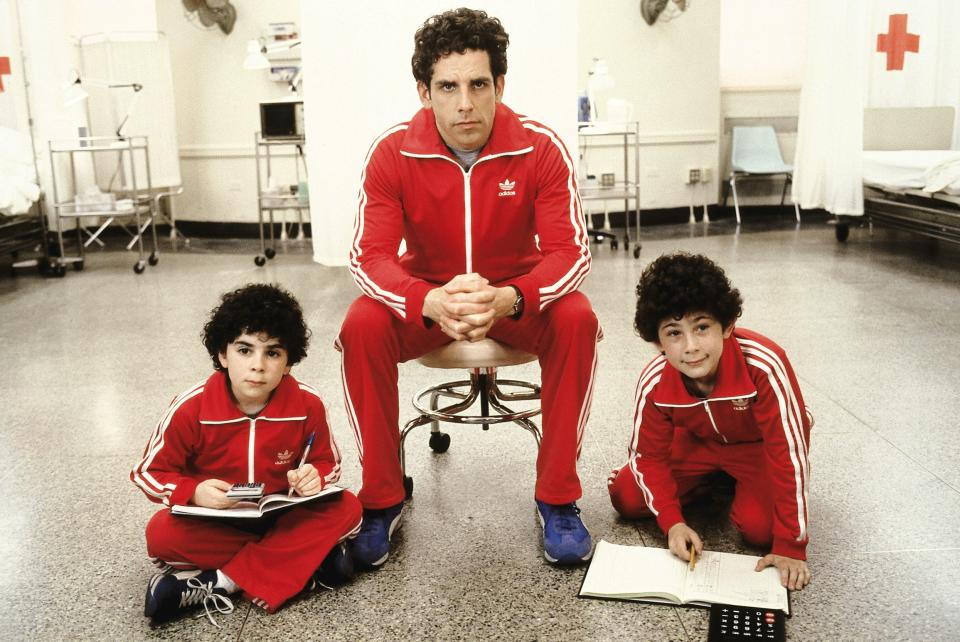
THE ROYAL TENENBAUMS, Grant Rosenmeyer, Ben Stiller, Jonah Meyerson, 2001. (c) Buena Vista Pictures/
©Buena Vista Pictures/Courtesy Everett CollectionChas, Ari, and Uzi Tenenbaum, The Royal Tenenbaums (2001)
While Paltrow’s turn as Margot might soak up most of the sartorial glory in The Royal Tenenbaums, spare a thought for Ben Stiller as her brother Chas and his two lookalike sons with their eye-popping, matchy-matchy red Adidas Firebird tracksuits. The goofy charm of the looks has seen them become more Halloween-costume fodder than runway inspiration material—except, perhaps, for the time when Felipe Oliveira Baptista sent a version of the style in the same cherry red color down the fall 2015 Lacoste runway that read René did it first. (Point taken.) That also happened to be the season Alessandro Michele’s debut at Gucci drew comparisons to the bookish bohemianism of Margot’s costumes in the same film, marking the beginning of a broader revival of Anderson-esque, maximalist dressing. Fashion coincidence, or fate?
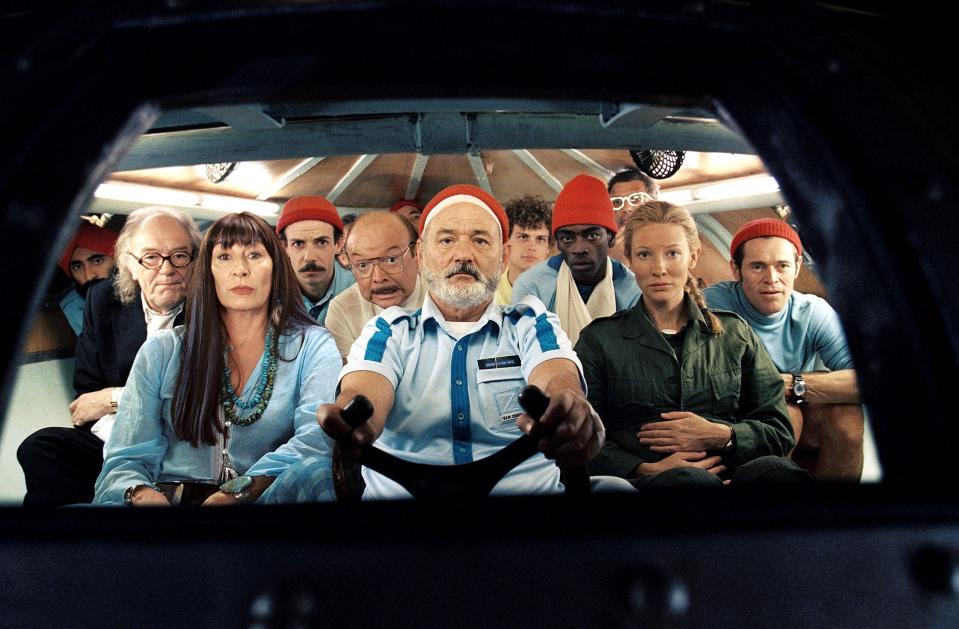
THE LIFE AQUATIC WITH STEVE ZISSOU, from left, Waris Ahluwalia, Michael Gambon, Anjelica Huston, Noa
©Buena Vista Pictures/Courtesy Everett CollectionSteve Zissou, The Life Aquatic with Steve Zissou (2004)
Continuing Anderson’s ongoing love affair with unusual headgear is the signature piece sported by Bill Murray as the titular character in The Life Aquatic with Steve Zissou. His bright orange beanie was paired with the baby blue uniform that outfitted the crew of his prized submarine, the Belafonte. The film also marked Anderson’s first collaboration with the legendary costume designer Milena Canonero, famous for her quirky take on sumptuous period style, from Stanley Kubrick’s 1975 Barry Lyndon to Sofia Coppola’s Marie Antoinette in 2006. While for Zissou she found herself working within more subdued territory, the designer’s playful side found an outlet in Anjelica Huston’s gypsy blouses and bohemian turquoise beads—not to mention the brief cameo from fashion legend Isabella Blow in one of her signature Philip Treacy hats. (The beanie, meanwhile, has been undergoing something of a renaissance in recent months, thanks to Gen Z style stars like Justin Bieber and Billie Eilish, who have both made the piece a wardrobe staple. As always, it seems you heard it from Wes first.)
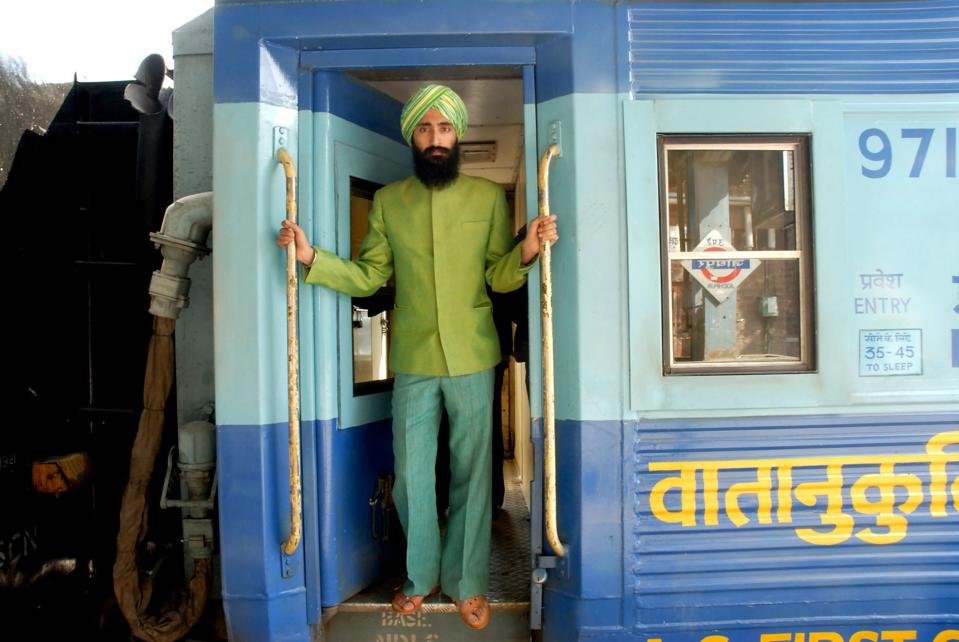
THE DARJEELING LIMITED, Waris Ahluwalia, 2007. ©Fox Searchlight/courtesy Everett Collection
©Fox Searchlight/Courtesy Everett CollectionThe Chief Steward, The Darjeeling Limited (2007)
Few of Anderson’s films are as visually memorable as the kaleidoscopic riot of color that is The Darjeeling Limited, a story of three estranged American brothers (played by Anderson regulars Owen Wilson, Jason Schwartzman, and Adrien Brody) embarking on the trip of a lifetime across the Indian subcontinent to reconnect spiritually. For the leading actors’ costumes, Anderson enlisted the help of his friend Marc Jacobs, who designed suits for all three in different cuts and colors to reflect their varying personalities. Jacobs also designed a set of custom Louis Vuitton luggage for the trio, decked out in exotica like zebras, giraffes, and palm trees. While the film drew some opprobrium for the cultural stereotypes invoked in its depiction of Indian culture, the costumes of the Indian characters themselves were a reverential celebration of the country’s rich history of textile and garment making, in particular the gorgeous blue sarees worn by Amara Karan as the train’s stewardess. Our personal favorite, however? The luxurious silk suits worn by Anderson’s friend Waris Ahluwalia (a style icon in his own right—he designed the matching Sikh dastār turbans himself) in his role as the train’s chief steward.
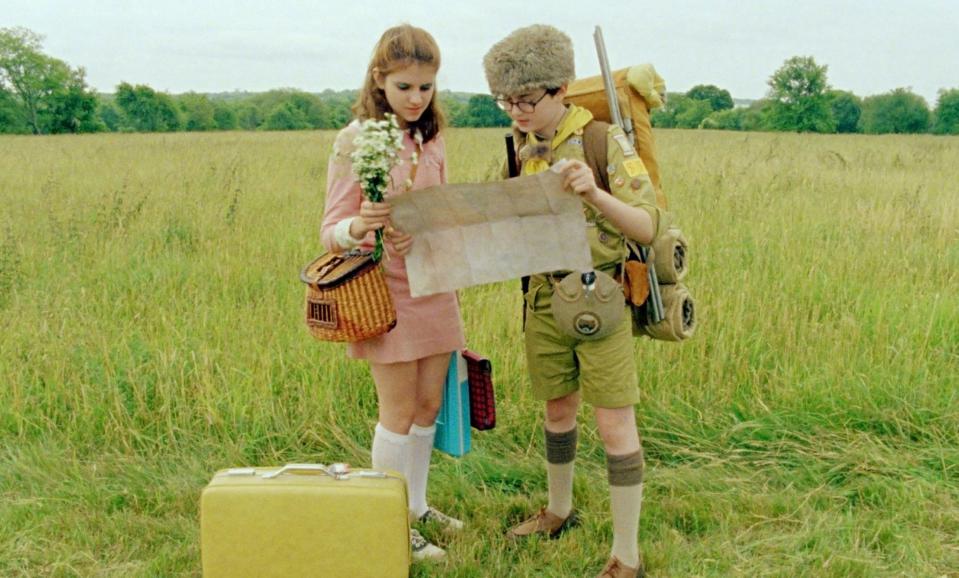
MOONRISE KINGDOM, from left: Kara Hayward, Jared Gilman, 2012. ©Focus Features/Courtesy Everett Coll
©Focus Features/Courtesy Everett CollectionSam and Suzy, Moonrise Kingdom (2012)
So good we couldn’t include just one character, the perfectly mismatched outfits of the duo at the heart of Anderson’s ode to young love are the ultimate expression of their odd-couple status. While the most eye-catching of the young runaways’ looks was undoubtedly Sam’s extravagantly badge-covered riff on a Scouts uniform (complete with a trapper hat), it was Suzy’s selection of Peter Pan–collar dresses in pink and yellow that truly won viewers’ hearts. A nod to the designs of Mary Quant, who defined the mod style of swinging ’60s London, it brought the look firmly into the present with its scrappy, outdoorsy spirit. In terms of its more recent fashion legacy? Look no further than Miu Miu’s fall 2014 show, where the practical padded nylons and bright yellow macs proved the perfect uniform for a young woman of Suzy’s ilk setting out on her first romantic adventure.
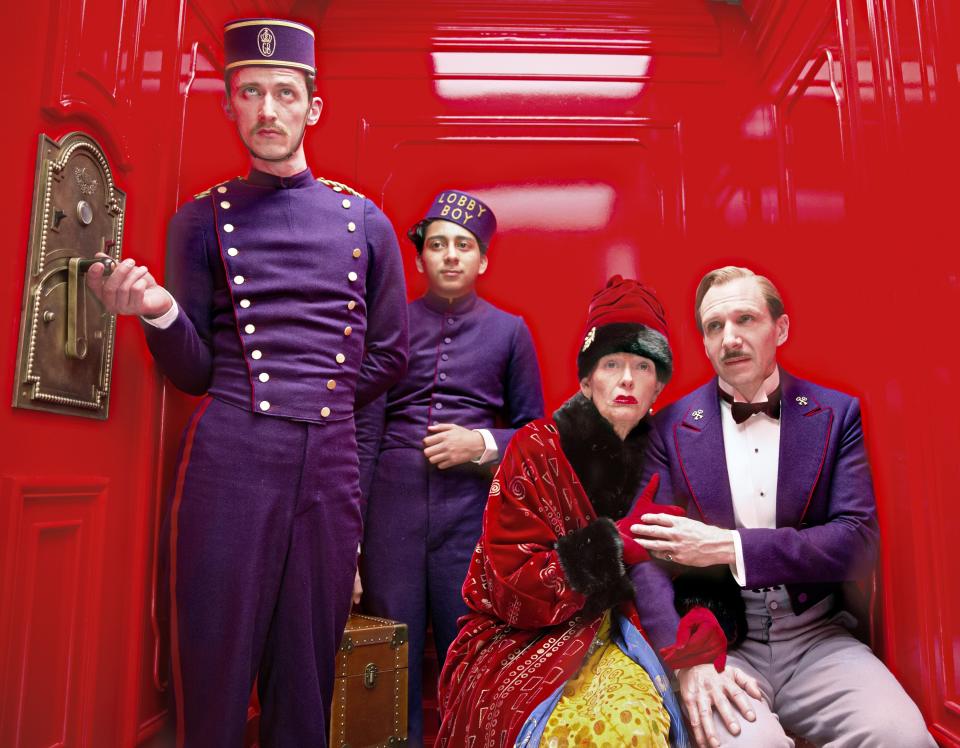
THE GRAND BUDAPEST HOTEL, from left: Paul Schlase, Tony Revolori, Tilda Swinton, Ralph Fiennes, 2014
©Fox Searchlight/Courtesy Everett CollectionMonsieur Gustave and his bellhops, The Grand Budapest Hotel (2014)
Remember those hotel porter’s uniforms we mentioned before? Well, with The Grand Budapest Hotel, Anderson not only got to finally indulge in the full gamut of hotel uniforms, from bellboys to cocktail waiters, but he also did so within the sweeping realization of the hotel as a whole, with every detail meticulously refined to reflect his vision of a fabulously kitschy mid-war Mitteleuropean resort. Once again, Anderson enlisted costume designer Canonero, who also worked with Prada and Fendi on various elements from luggage to furs. But it was Ralph Fiennes as M. Gustave and his trusty cadre of bellhops that stole the show. With their glorious assortment of matching purple tailoring and pillbox hats (neatly embroidered with their job titles in gold lettering), the costumes offered the perfect summation of Anderson’s decade-hopping, detail-obsessed ability to merge the worlds of fashion and film like no other.
Originally Appeared on Vogue

